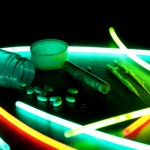I recently read an article on patents who appear to have Alzheimer's when they present to a physician's office or an Emergency Room, but actually have some other disease or problem. An old friend visiting now us is an ER doc and said, "I see that all the time; it's usually hyponatremia,"
As a nephrologist, I've also seen a number of patients with mild to severe hyponatremia ,i.e., a relatively low blood sodium concentration, said to be the most common metabolic problem seen in the United States. The normal numbers are 135 to 145; anything under 130 is termed severe hyponatremia; under 120 is critical, life-threatening hyponatremia.
In doing my background research, I found a Boston Globe article on a tragedy that occurred in the 2002 Boston Marathon. So I'll follow that thread for this post and discuss background data on other sodium issues later.
Most of us are familiar with a marathon as a long-distance race; actually it's 26 miles and 385 yards (there's a fascinating story behind that being the distance) and world record times are just over two hours for men and about twelve minutes longer for women.
In that 2002 race, one relatively inexperienced runner (this was only her second race at that distance) seemed to be doing well six miles from the finish, but then started to have problems. She told a friend she felt rubber-legged and dehydrated. Then she collapsed, became comatose and died. The autopsy conclusion was that hyponatremia secondary to drinking too much Gatorade had precipitated brain swelling that led to her death. She was only the second death in the over 100-year history of that marathon. Blood samples were studied by a Harvard staff physician and five years later in the American Journal of Medicine that physician and collaborators published an article, "Hyponatremia due to SIADH in Runners,"
So what does that weird acronym mean? It stands for Syndrome of Inappropriate Anti-Diuretic Hormone (ADH) secretion. Let's start from scratch even if I get too basic. A syndrome is a group of symptoms and signs (the latter being observed by a second person) that together characterize a disease or disorder. A diruetic is something that increases urine flow. A hormone is a chemical produced by a gland or cell in our bodies that has an effect on other cells or tissues.
ADH is secreted by the pituitary gland, a pea-sized structure at the base of the skull that has so many functions it's sometimes called the master gland. This particular hormone controls the ability of water to pass through the cells in the walls of tubules in the kidneys and therefore be retained in the body. If no ADH is present, then no water can pass through those walls. The more ADH present, the more water can pass through.
An October, 2005, article in The New York Times was titled "Marathoners Warned About Too Much Water." But most who run the distance, even those who feel puny at some point and seek medical help for non-injury reasons, have normal to slightly high sodium levels. They've lost a little weight through sweating, but the medical director of the NYC marathon stated, "There are no reported cases of dehydration causing death in the history of world running." NB. The four deaths in the 2005 Great North Run in England on a warm, sunny day have been cited to be dehydration-related, but not by medical evidence that I've been able to find.
On the other hand, a 2005 article in the New England Journal of Medicine, looking at "Hyponatremia among Runners in the Boston Marathon," enrolled 766 participants in the 2002 race, did not measure their sodium levels before the gun sounded, but 511 came to the research station at the finish line and 489 of those gave a blood sample (most of the ones who didn't had a close connection for an airplane flight).
Thirteen percent had low sodium levels, with 37 of 166 women (22 percent) and 25 of 322 men (8 percent) in that group. Three had sodium levels under 120. Hyponatremia was strongly tied to weight gain, so the authors' conclusion was they were drinking too much water or sports drinks (it's important to realize that these have a relatively low sodium content).
The Harvard researcher and his co-authors termed this as exercise-associated hyponatremia (EAD), measured ADH levels and those of Interleukin-6, a protein that's released from damaged muscles and can lead to ADH secretion. They concluded that EAD cases meet the criteria for SIADH. An increase of 3% of the runners' body weight would correlate to a decrease in serum sodium to less than 130.
So how do we avoid more hyponatremic deaths among marathon runners? Education seems the primary answer and perhaps weighing slower runners during the race. I can envision a scale a runner steps on (without stopping) with a relay of information to a point a short distance further on where race advisors could shout, "Number 3277, quit drinking any more fluids."





